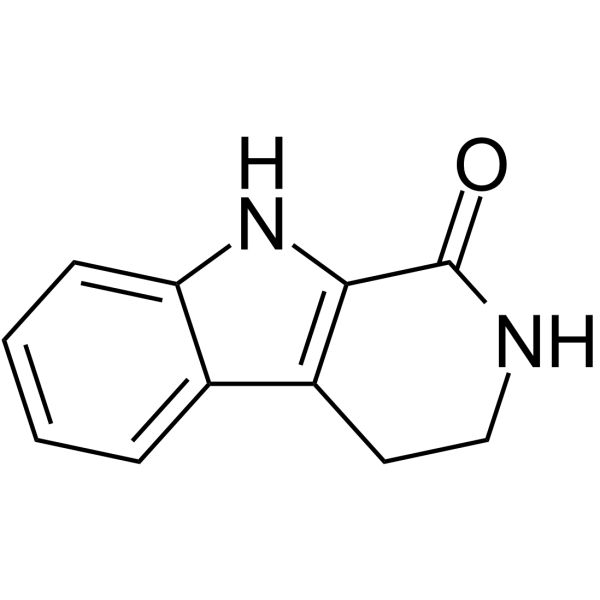
1,2,3,4-Tetrahydronorharman-1-one
CAS No. 17952-82-8
1,2,3,4-Tetrahydronorharman-1-one( L-Oxonoreleagnine )
Catalog No. M29371 CAS No. 17952-82-8
1,2,3,4-Tetrahydronorharman-1-one is isolated from the Indonesian marine sponge Acanthostrongylophora ingens.
Purity : >98% (HPLC)
 COA
COA
 Datasheet
Datasheet
 HNMR
HNMR
 HPLC
HPLC
 MSDS
MSDS
 Handing Instructions
Handing Instructions
| Size | Price / USD | Stock | Quantity |
| 5MG | 45 | Get Quote |


|
| 10MG | 68 | Get Quote |


|
| 25MG | 115 | Get Quote |


|
| 50MG | 173 | Get Quote |


|
| 100MG | 258 | Get Quote |


|
| 500MG | 622 | Get Quote |


|
| 1G | Get Quote | Get Quote |


|
Biological Information
-
Product Name1,2,3,4-Tetrahydronorharman-1-one
-
NoteResearch use only, not for human use.
-
Brief Description1,2,3,4-Tetrahydronorharman-1-one is isolated from the Indonesian marine sponge Acanthostrongylophora ingens.
-
Description1,2,3,4-Tetrahydronorharman-1-one is isolated from the Indonesian marine sponge Acanthostrongylophora ingens.(In Vitro):1,2,3,4-Tetrahydronorharman-1-one exhibits activity against infectious and tropical parasitic diseases.
-
In Vitro——
-
In Vivo——
-
SynonymsL-Oxonoreleagnine
-
PathwayMicrobiology/Virology
-
TargetParasite
-
RecptorParasite
-
Research Area——
-
Indication——
Chemical Information
-
CAS Number17952-82-8
-
Formula Weight186.21
-
Molecular FormulaC11H10N2O
-
Purity>98% (HPLC)
-
Solubility——
-
SMILESO=C1NCCC=2C=3C=CC=CC3NC12
-
Chemical Name——
Shipping & Storage Information
-
Storage(-20℃)
-
ShippingWith Ice Pack
-
Stability≥ 2 years
Reference
molnova catalog



related products
-
Naphthoquine phospha...
An antimalarial drug.
-
Chlorin E6
Chlorin E6 (CE6) is a second-generation photosensitizer with antitumor activity when used in combination with irradiation.
-
T-0156
T-0156 is a novel, potent and selective phosphodiesterase type 5 inhibitor that inhibits the hydrolysis of cyclic guanosine monophosphate (cGMP) with low affinity for PDE6, PDE1, PDE2, PDE3 and PDE4.



 Cart
Cart
 sales@molnova.com
sales@molnova.com


